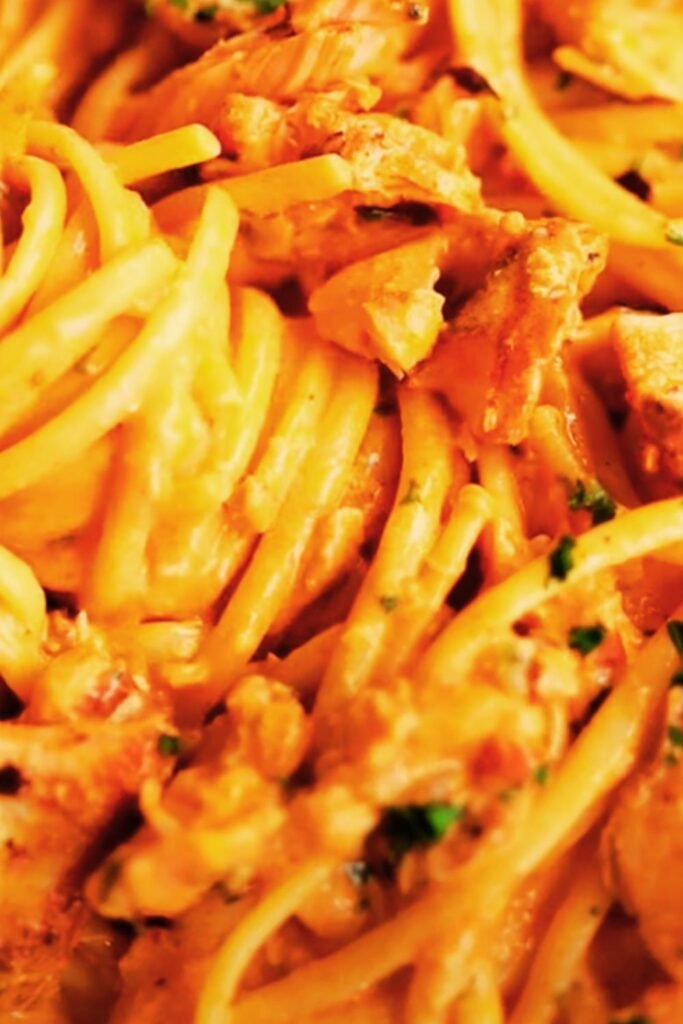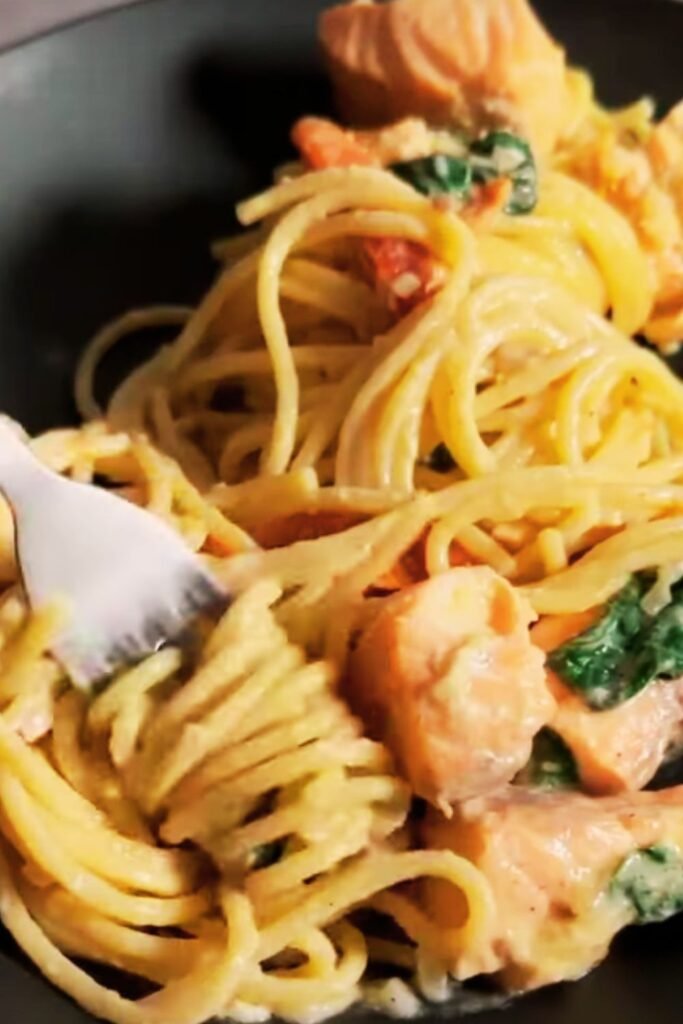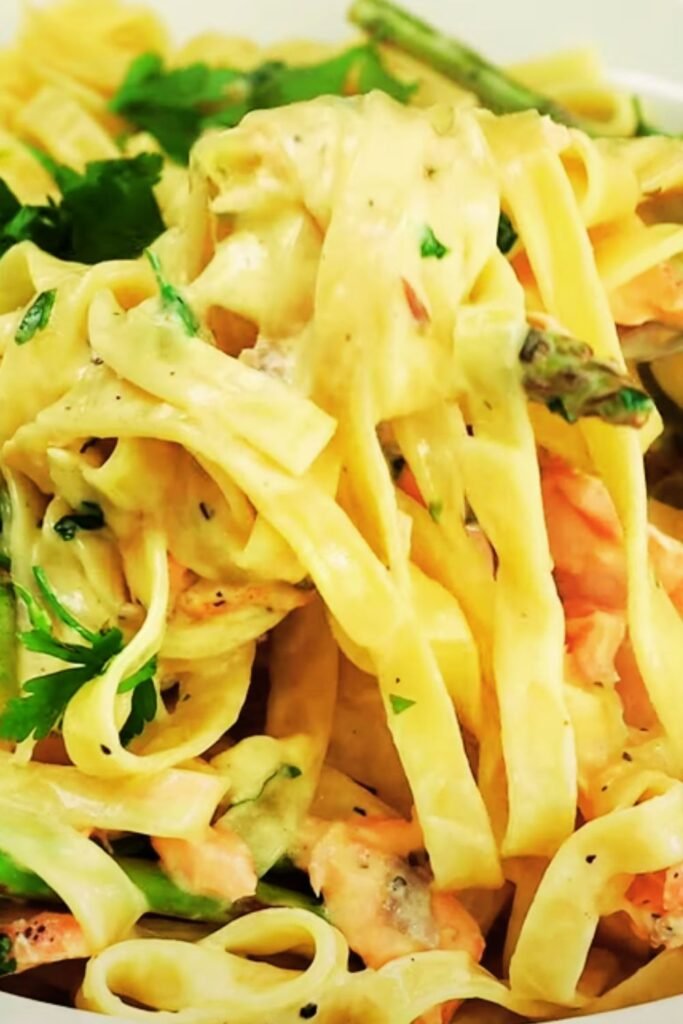When I first discovered the magic of combining tender salmon with perfectly cooked pasta, my dinner game changed forever. There’s something incredibly satisfying about the way flaky salmon melds with creamy sauces and al dente noodles, creating a dish that feels both elegant and comforting. Over the years, I’ve experimented with countless variations, from simple garlic butter preparations to sophisticated cream-based sauces that would make any restaurant jealous.
Salmon pasta isn’t just another weeknight dinner option – it’s a versatile canvas that allows home cooks to explore different flavors, textures, and cooking techniques. Whether you’re working with fresh Atlantic salmon or canned salmon from your pantry, this dish offers endless possibilities for creativity while delivering exceptional nutritional value.
Understanding Salmon: The Star of Your Pasta
Before diving into recipes, I want to share what I’ve learned about selecting and preparing salmon for pasta dishes. The type of salmon you choose significantly impacts the final result, and understanding these differences helps you make informed decisions based on your budget, availability, and flavor preferences.
Fresh Salmon Varieties:
- Atlantic Salmon: Rich, buttery flavor with high fat content
- Coho Salmon: Mild taste with firm texture
- Sockeye Salmon: Bold, robust flavor with deep red color
- King Salmon: Premium choice with highest fat content
Canned Salmon Options:
- Wild-caught varieties: More sustainable with intense flavor
- Farmed salmon: Consistent quality and availability
- Bone-in vs. boneless: Affects preparation time and texture
The key to successful salmon pasta lies in proper preparation. I always remove the skin before cooking (unless specifically going for a crispy skin element), check thoroughly for pin bones, and cut the salmon into uniform pieces to ensure even cooking.
Essential Pasta Shapes for Salmon Dishes
Not all pasta shapes work equally well with salmon. Through trial and error, I’ve discovered that certain shapes complement the delicate texture and rich flavor of salmon better than others.
Recommended Pasta Shapes:
| Pasta Type | Best Use | Why It Works |
|---|---|---|
| Penne | Chunky salmon pieces | Tubes hold sauce and salmon bits |
| Fettuccine | Creamy salmon sauces | Wide surface area for coating |
| Linguine | Smoked salmon dishes | Elegant presentation, even distribution |
| Rigatoni | Hearty salmon ragù | Large tubes accommodate salmon chunks |
| Farfalle | Cold salmon salads | Bow tie shape holds ingredients well |
| Spaghetti | Oil-based salmon sauces | Classic pairing, easy to twirl |
Cooking Pasta Perfectly:
- Use plenty of salted water (1 tablespoon salt per 4 quarts water)
- Cook to al dente according to package directions minus 1 minute
- Reserve 1 cup pasta water before draining
- Never rinse pasta for hot dishes

My Go-To Creamy Salmon Pasta Recipe
This recipe has become my signature dish for dinner parties and special occasions. The combination of fresh salmon, heavy cream, and aromatic herbs creates a restaurant-quality meal that never fails to impress.
Ingredients:
- 1 pound fresh salmon fillet, skin removed
- 12 oz fettuccine pasta
- 1 cup heavy cream
- 3 cloves garlic, minced
- 1 medium shallot, finely diced
- 1/2 cup dry white wine (optional)
- 2 tablespoons olive oil
- 2 tablespoons butter
- 1/4 cup fresh dill, chopped
- 2 tablespoons capers
- 1/2 cup grated Parmesan cheese
- Salt and black pepper to taste
- Lemon zest from 1 lemon
- 2 tablespoons fresh lemon juice
Preparation Steps:
- Prepare the salmon: Cut into 1-inch cubes, season with salt and pepper
- Start the pasta: Bring salted water to boil, add fettuccine
- Cook the salmon: Heat olive oil in large skillet over medium-high heat, add salmon cubes and cook 2-3 minutes per side until just cooked through, remove and set aside
- Build the sauce: In the same pan, add butter and shallot, cook until fragrant (about 2 minutes)
- Add aromatics: Include garlic and cook for another 30 seconds
- Deglaze: Pour in white wine if using, let it reduce by half
- Create cream base: Add heavy cream, bring to gentle simmer
- Combine elements: Return salmon to pan, add drained pasta with reserved pasta water as needed
- Finish the dish: Stir in dill, capers, Parmesan, lemon zest, and lemon juice
- Final seasoning: Taste and adjust salt and pepper
Pro Tips I’ve Learned:
- Don’t overcook the salmon – it continues cooking in the sauce
- Add pasta water gradually to achieve perfect consistency
- Fresh herbs make a significant difference in flavor
- Serve immediately for best texture
Quick Weeknight Salmon Pasta Variations
When time is limited, I rely on these faster variations that don’t compromise on flavor. Each recipe takes 30 minutes or less from start to finish.
Simple Garlic Butter Salmon Pasta: This minimalist approach lets the salmon shine while creating a silky, aromatic sauce that coats every strand of pasta.
- 12 oz spaghetti
- 1 can (14.75 oz) salmon, drained and flaked
- 4 cloves garlic, sliced thin
- 1/4 cup olive oil
- 3 tablespoons butter
- 1/4 cup fresh parsley, chopped
- Red pepper flakes to taste
- Lemon juice and zest
Cook pasta according to package directions. Meanwhile, heat olive oil in large skillet, add garlic and cook until fragrant. Add salmon, breaking into bite-sized pieces. Toss with drained pasta, butter, parsley, and seasonings. The simplicity of this dish never ceases to amaze me – it’s proof that great cooking doesn’t always require complex techniques.
Mediterranean Salmon Pasta: This variation incorporates sun-dried tomatoes, olives, and fresh basil for a bright, Mediterranean-inspired meal.
- 12 oz penne pasta
- 1 pound salmon fillet, cubed
- 1/2 cup sun-dried tomatoes, chopped
- 1/2 cup Kalamata olives, pitted and halved
- 1/4 cup fresh basil leaves
- 2 tablespoons olive oil
- 1 cup cherry tomatoes, halved
- 1/2 cup crumbled feta cheese
The combination of briny olives, sweet sun-dried tomatoes, and creamy feta creates a flavor profile that transports me to the Greek islands every time I make this dish.

Nutritional Benefits of Salmon Pasta
One of the reasons I love salmon pasta so much is its impressive nutritional profile. This dish provides a perfect balance of protein, healthy fats, and complex carbohydrates, making it both satisfying and nourishing.
Nutritional Analysis per Serving (4 servings total):
| Nutrient | Amount | Daily Value % |
|---|---|---|
| Calories | 485 | 24% |
| Protein | 32g | 64% |
| Omega-3 Fatty Acids | 1.8g | 200% |
| Selenium | 40mcg | 73% |
| Vitamin D | 360 IU | 90% |
| Vitamin B12 | 3.2mcg | 133% |
| Phosphorus | 340mg | 34% |
| Potassium | 520mg | 15% |
Health Benefits:
- Heart Health: Omega-3 fatty acids support cardiovascular function
- Brain Function: DHA and EPA promote cognitive health
- Bone Strength: Vitamin D and phosphorus support bone density
- Immune System: Selenium acts as a powerful antioxidant
- Energy Production: B vitamins help convert food into energy
The combination of salmon and pasta creates a meal that satisfies hunger while providing sustained energy. I often recommend this dish to friends who are looking for nutritious comfort food that doesn’t feel like a compromise.
Advanced Cooking Techniques for Perfect Salmon Pasta
Over the years, I’ve developed several techniques that elevate salmon pasta from good to exceptional. These methods require a bit more attention but deliver restaurant-quality results.
Confit Salmon Technique: This gentle cooking method produces incredibly tender salmon that flakes beautifully in pasta.
- Prepare the oil bath: Heat olive oil to 140°F (60°C) in a small saucepan
- Season the salmon: Salt the salmon pieces and let sit for 15 minutes
- Confit process: Submerge salmon in warm oil for 15-20 minutes
- Gentle handling: Remove carefully with slotted spoon
- Finish in pasta: Add to pasta during final tossing
Smoked Salmon Integration: Working with smoked salmon requires different techniques to preserve its delicate texture and intense flavor.
- Cold addition: Add smoked salmon after removing pasta from heat
- Gentle folding: Use tongs to carefully incorporate without breaking
- Flavor balance: Reduce salt in other components to compensate
- Cream pairing: Smoked salmon works beautifully with cream-based sauces
Salmon Skin Crisping: When I want to add textural contrast, I crisp the salmon skin separately as a garnish.
- Score the skin: Make shallow cuts to prevent curling
- Season well: Salt and pepper both sides
- Pan-fry skin-side down: Cook until golden and crispy
- Finish in oven: Brief stint at 400°F to complete cooking
- Garnish application: Break into pieces and sprinkle over finished pasta

Sauce Pairings and Flavor Combinations
The beauty of salmon pasta lies in its versatility with different sauce styles. Each approach brings out different aspects of the salmon’s flavor while creating unique dining experiences.
Cream-Based Sauces: These rich, luxurious sauces complement salmon’s natural oils while adding decadent texture.
- Classic Alfredo: Butter, cream, and Parmesan create timeless elegance
- Lemon Herb Cream: Brightened with citrus and fresh herbs
- Dill Cream Sauce: Scandinavian-inspired with fresh dill and capers
- Mushroom Cream: Earthy mushrooms add depth and umami
Oil-Based Sauces: Lighter preparations that let salmon’s flavor shine through.
- Aglio e Olio: Garlic, olive oil, and red pepper flakes
- Lemon Butter: Simple but sophisticated flavor combination
- Herb Oil: Infused with fresh basil, parsley, or chives
- Caper Butter: Briny capers add Mediterranean flair
Tomato-Based Sauces: These provide acidity that cuts through salmon’s richness while adding vibrant color.
- Fresh Tomato Basil: Light, summery, and full of fresh flavor
- Roasted Tomato: Concentrated sweetness from oven-roasted tomatoes
- Puttanesca Style: Bold flavors with olives, capers, and anchovies
- Cherry Tomato Burst: Quick-cooked tomatoes that pop with flavor
Seasonal Variations and Ingredient Swaps
Throughout the year, I adapt my salmon pasta recipes to incorporate seasonal ingredients and accommodate different dietary needs. These variations keep the dish fresh and exciting while maintaining its core appeal.
Spring Variations:
- Asparagus and Peas: Fresh spring vegetables add color and crunch
- Lemon and Fresh Herbs: Bright flavors that celebrate the season
- Artichoke Hearts: Tender artichokes provide Mediterranean flair
- Spring Onions: Milder than regular onions, perfect for delicate dishes
Summer Adaptations:
- Cherry Tomato Explosion: Peak-season tomatoes at their sweetest
- Fresh Corn Kernels: Sweet corn adds unexpected texture
- Zucchini Ribbons: Light and fresh, perfect for hot weather
- Basil Pesto: Homemade pesto showcases summer basil
Fall Inspirations:
- Roasted Butternut Squash: Creamy sweetness balances salmon’s richness
- Wild Mushroom Medley: Earthy flavors complement autumn weather
- Sage Brown Butter: Nutty, aromatic sauce perfect for cooler days
- Caramelized Onions: Sweet, golden onions add depth
Winter Comfort:
- Creamy Spinach: Nutrient-dense greens in rich cream sauce
- Roasted Garlic: Mellow, sweet garlic flavor
- Sun-Dried Tomatoes: Concentrated tomato flavor when fresh isn’t available
- Braised Leeks: Mild, sweet onion family member
Dietary Modifications and Substitutions
I frequently adapt salmon pasta recipes for friends with different dietary needs. These modifications ensure everyone can enjoy this delicious dish regardless of their restrictions.
Gluten-Free Options:
| Traditional Pasta | Gluten-Free Alternative | Cooking Notes |
|---|---|---|
| Wheat Pasta | Rice Pasta | Rinse after cooking to prevent sticking |
| Fettuccine | Shirataki Noodles | Rinse thoroughly, dry-fry before saucing |
| Spaghetti | Zucchini Noodles | Don’t overcook, add at the very end |
| Penne | Chickpea Pasta | Higher protein, slightly nutty flavor |
| Linguine | Kelp Noodles | Very low calorie, unique texture |
Dairy-Free Adaptations:
- Coconut Cream: Replace heavy cream with full-fat coconut milk
- Cashew Cream: Soaked cashews blended with water create creamy base
- Nutritional Yeast: Provides cheese-like flavor without dairy
- Olive Oil: Increase good quality olive oil for richness
Lower-Carb Versions:
- Spaghetti Squash: Natural pasta substitute with mild flavor
- Cauliflower Rice: Processed cauliflower as pasta alternative
- Zucchini Noodles: Spiralized zucchini for fresh, light option
- Cabbage Noodles: Thinly sliced cabbage provides crunch
Storage, Reheating, and Meal Prep Tips
Proper storage and reheating techniques ensure your salmon pasta remains delicious even as leftovers. I’ve developed these methods through experience and occasional mishaps.
Storage Guidelines:
- Refrigerator: Store in airtight container for up to 3 days
- Freezer: Not recommended as pasta texture suffers
- Portioning: Divide into meal-sized portions for easy reheating
- Sauce separation: Store extra sauce separately when possible
Reheating Methods:
- Stovetop: Gentle heat with splash of pasta water or cream
- Microwave: 50% power in 30-second intervals, stirring between
- Oven: Cover with foil, heat at 350°F for 15-20 minutes
- Steam: Gentle steam reheating preserves texture
Meal Prep Strategies:
- Cook components separately: Combine when ready to serve
- Pre-cook salmon: Reheat gently in sauce
- Sauce preparation: Make sauce ahead, store refrigerated
- Fresh herb addition: Add fresh herbs only when serving
Serving Suggestions and Accompaniments
The right accompaniments can transform salmon pasta from a simple meal into a memorable dining experience. I’ve experimented with various sides and presentations over the years.
Bread Pairings:
- Garlic Bread: Classic choice that never disappoints
- Focaccia: Herb-topped Italian bread complements Mediterranean versions
- Crusty Sourdough: Tangy flavor balances rich salmon
- Breadsticks: Easy to serve and perfect for casual dining
Salad Combinations:
- Arugula Salad: Peppery greens with lemon vinaigrette
- Caesar Salad: Classic pairing with creamy salmon pasta
- Mixed Greens: Light, fresh contrast to rich pasta
- Caprese Salad: Tomato, mozzarella, and basil for Italian theme
Vegetable Sides:
- Roasted Asparagus: Elegant and seasonal
- Sautéed Spinach: Nutrient-dense and quick-cooking
- Roasted Brussels Sprouts: Caramelized and slightly bitter
- Steamed Broccoli: Simple, healthy, and colorful
Troubleshooting Common Issues
Even experienced cooks encounter challenges when making salmon pasta. I’ve learned to identify and solve these common problems.
Dry Salmon:
- Cause: Overcooking or high heat
- Solution: Lower heat, shorter cooking time
- Prevention: Use meat thermometer (145°F internal temperature)
Broken Cream Sauce:
- Cause: Too high heat or adding cream too quickly
- Solution: Remove from heat, whisk vigorously, add pasta water
- Prevention: Gentle heat, gradual cream addition
Bland Flavor:
- Cause: Under-seasoning or poor-quality ingredients
- Solution: Taste and adjust salt, add acid (lemon juice)
- Prevention: Season at each step, use fresh herbs
Mushy Pasta:
- Cause: Overcooking or continuing to cook in sauce
- Solution: Start with fresh pasta, combine quickly
- Prevention: Cook pasta al dente, reserve pasta water
Q&A Section
Q: Can I use frozen salmon for pasta dishes? A: Absolutely! I use frozen salmon regularly. Just thaw it completely in the refrigerator overnight, pat dry, and proceed with the recipe. Frozen salmon often has better texture than fresh salmon that’s been sitting around.
Q: What’s the best way to remove pin bones from salmon? A: I use clean needle-nose pliers or tweezers. Run your finger along the flesh to locate bones, then grip firmly and pull straight out in the direction the bone was pointing. Good lighting helps tremendously.
Q: Can I make salmon pasta ahead of time for entertaining? A: I recommend cooking the salmon and making the sauce ahead, then combining with freshly cooked pasta when ready to serve. This prevents the pasta from becoming mushy and ensures the best texture.
Q: How do I know when salmon is perfectly cooked? A: The salmon should flake easily with a fork and reach an internal temperature of 145°F. It should be opaque throughout but still moist. I prefer to slightly undercook it since it continues cooking when added to the hot pasta.
Q: What wine pairs well with salmon pasta? A: For creamy sauces, I love Chardonnay or Pinot Grigio. With tomato-based sauces, try Pinot Noir or Sangiovese. The key is matching the wine’s weight to the sauce’s richness.
Q: Can I substitute canned salmon for fresh? A: Yes, canned salmon works wonderfully and is much more budget-friendly. I prefer wild-caught canned salmon for better flavor. Just drain well and flake gently to maintain some texture.
Q: How do I prevent my cream sauce from curdling? A: Keep the heat low to medium, add cream gradually, and never let it boil vigorously. If it starts to curdle, remove from heat immediately and whisk in a splash of cold cream or pasta water.
Q: What’s the secret to restaurant-quality salmon pasta at home? A: The key is building layers of flavor. Season at each step, use high-quality ingredients, don’t overcook the salmon, and finish with fresh herbs and a squeeze of lemon. Also, never skip the pasta water – it’s crucial for creating silky sauces.
Creating perfect salmon pasta is a journey of discovery that rewards experimentation and attention to detail. Each time I make this dish, I learn something new about balancing flavors, textures, and techniques. The beauty lies not just in the final result, but in the process of creating something delicious and nourishing for the people you care about.
Whether you’re preparing a quick weeknight dinner or an elegant meal for guests, salmon pasta offers endless possibilities for creativity and satisfaction. The combination of protein-rich salmon, comforting pasta, and versatile sauces creates a dish that never gets old, no matter how many times you make it.
Remember, the best recipes are those that you make your own through practice and personal touches. Don’t be afraid to experiment with different herbs, vegetables, or cooking techniques. Each variation teaches you something new and brings you closer to mastering this wonderful dish.
So grab your apron, select your favorite pasta shape, and let the aromatic journey of creating salmon pasta begin. Your taste buds – and your dinner guests – will thank you for the delicious adventure.